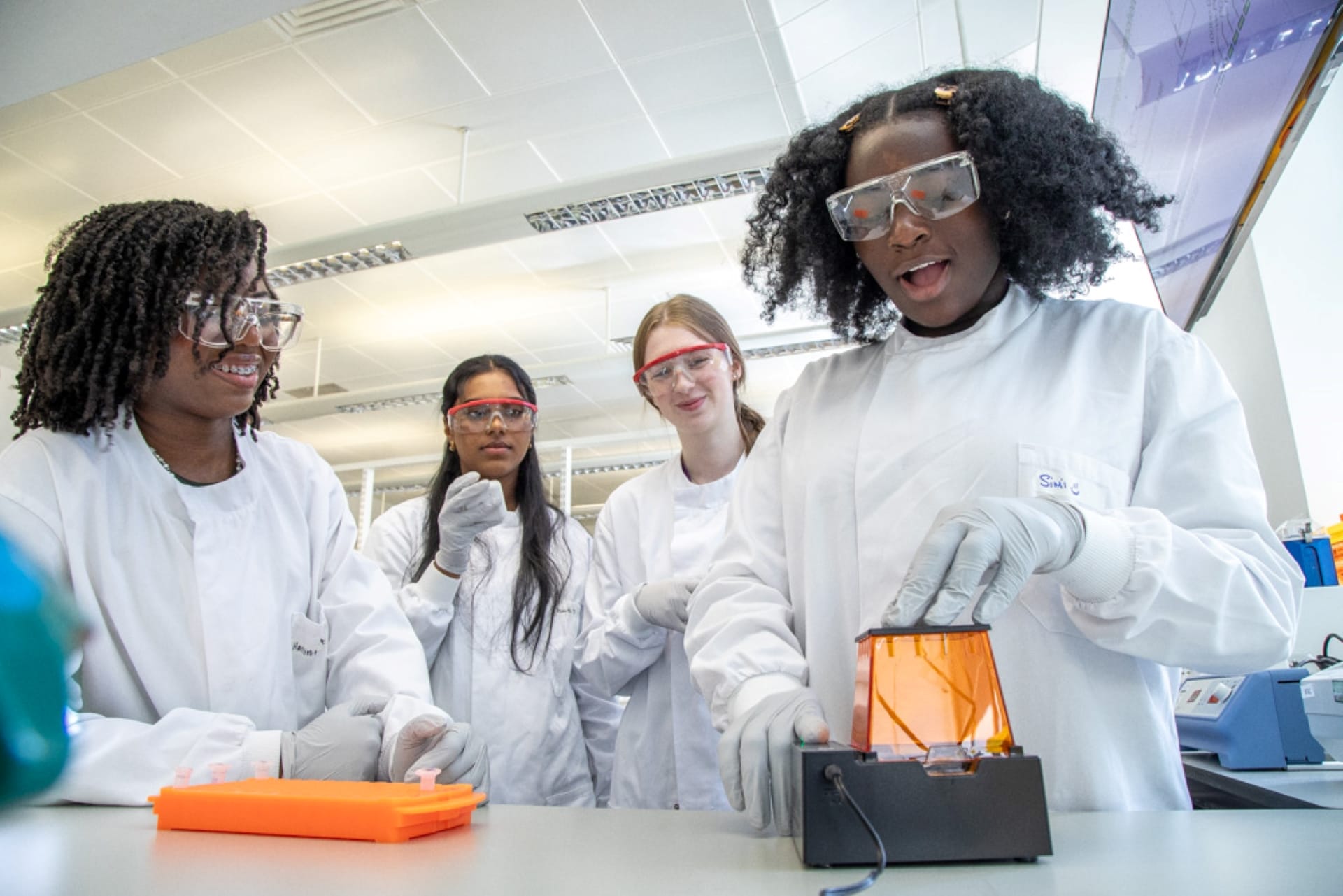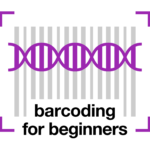Barcoding for beginners

Information and resources for educators and students participating in the Barcoding for beginners project
Barcoding for beginners is a project funded by a Royal Society Partnership Grant that allows students to undertake novel scientific research using molecular biology and bioinformatics, whilst developing skills and experiencing careers in genomics.
A series of 10, one hour sessions are provided. Educators from participating schools get hands-on with the project during professional development. Then equipment loan, consumable and resource provision, partnering with staff working in genomics and support are provided, so that educators can extend this experience to their students in school or college. Those participating explore career opportunities, develop lab skills and knowledge of bioinformatics. The project involves collecting an invertebrate sample, extracting DNA, using PCR to amplify a DNA barcode, visualising the product using gel electrophoresis, obtaining DNA sequence, then using bioinformatics to compare the DNA barcode sequence to a database to assist in identification of the invertebrate. To enhance communication skills students produce a scientific poster describing their work to share in the school or college community.
Find all of the session downloads below. Please note that some of these files will trigger large downloads when clicked.

This document provides an overview of the Barcoding for beginners project, including session outlines, equipment needed and other important details before starting the project.
Included in this download is the following:
- Barcoding for beginners overview
This download includes all documents required for the Barcoding for beginners project.
Please note this is a large file download and may take some time to download. If you would like to download specific session downloads please find them below.
Session downloads
Aim: Deliver an assembly / tutor / subject cohort session about the opportunity to participate in Barcoding for beginners – investigating the biodiversity of invertebrates in the local area. Explain what barcoding for biodiversity is, and how it can be used to identify known invertebrates or start to characterise unknown invertebrates.
Included in this download is the following:
- Educator notes
- PowerPoint presentation
Aim: Develop an understanding of the barcoding process and how it will be used in your investigation. Learn what bioinformatics is and use some barcodes from another project to identify the invertebrates sampled. Plan sample collection.
Included in this download is the following:
- Educator notes
- Student notes
- PowerPoint presentation
- BLAST results table
- Barcoding for beginners declaration of consent form
- Sample information record sheet
- Unknown barcodes sheet
Aim: Develop proficiency in dispensing small volumes of liquid accurately using a micropipette. Understand the principles of gel electrophoresis, then run and interpret gels based on understanding of the technique.
Included in this download is the following:
- Educator notes
- Student notes
- PowerPoint presentation
- Micropipetting target practice sheet
- Model risk assessment
Aim: Extract DNA from biological samples minimising opportunities for contamination or DNA degradation.
Included in this download is the following:
- Educator notes
- Student notes
- PowerPoint presentation
- Model risk assessment
Aim: To amplify the DNA barcode gene (cytochrome c oxidase subunit 1) for animals, using a PCR.
Included in this download is the following:
- Educator notes
- Student notes
- PowerPoint presentation
- Model risk assessment
Aim: To check that the DNA extraction and PCR have been successful, using agarose gel electrophoresis to determine the size of the DNA products and compare them to the expected sizes. Prepare successful PCR products for DNA sequencing.
Included in this download is the following:
- Educator notes
- Student notes
- PowerPoint presentation
- Model risk assessment
Aim: Experience the scientific work environment. See the DNA sequencing labs and meet scientists providing career insights.
Included in this download is the following:
- Educator notes
Aim: View and interpret the chromatogram from DNA sequencing. Use the DNA barcode sequence file to identify the invertebrates sampled using bioinformatics.
Included in this download is the following:
- Educator notes
- Student notes
- PowerPoint presentation
Aim: Explore evolutionary relationships between the invertebrates identified. Align multiple DNA sequences, use the number of differences to make a phylogenetic tree, then consider different ways of presenting phylogenetic trees, generating a ‘Tree of Life’ for the invertebrate samples.
Included in this download is the following:
- Educator notes
- Student notes
- PowerPoint presentation
- Known barcodes sheet
Aim: Develop or enhance skills in scientific communication through poster presentation of results.
Included in this download is the following:
- Educator notes
- Student notes
- PowerPoint presentation
- Scientific poster template
- Barcoding for beginners certificate of participation